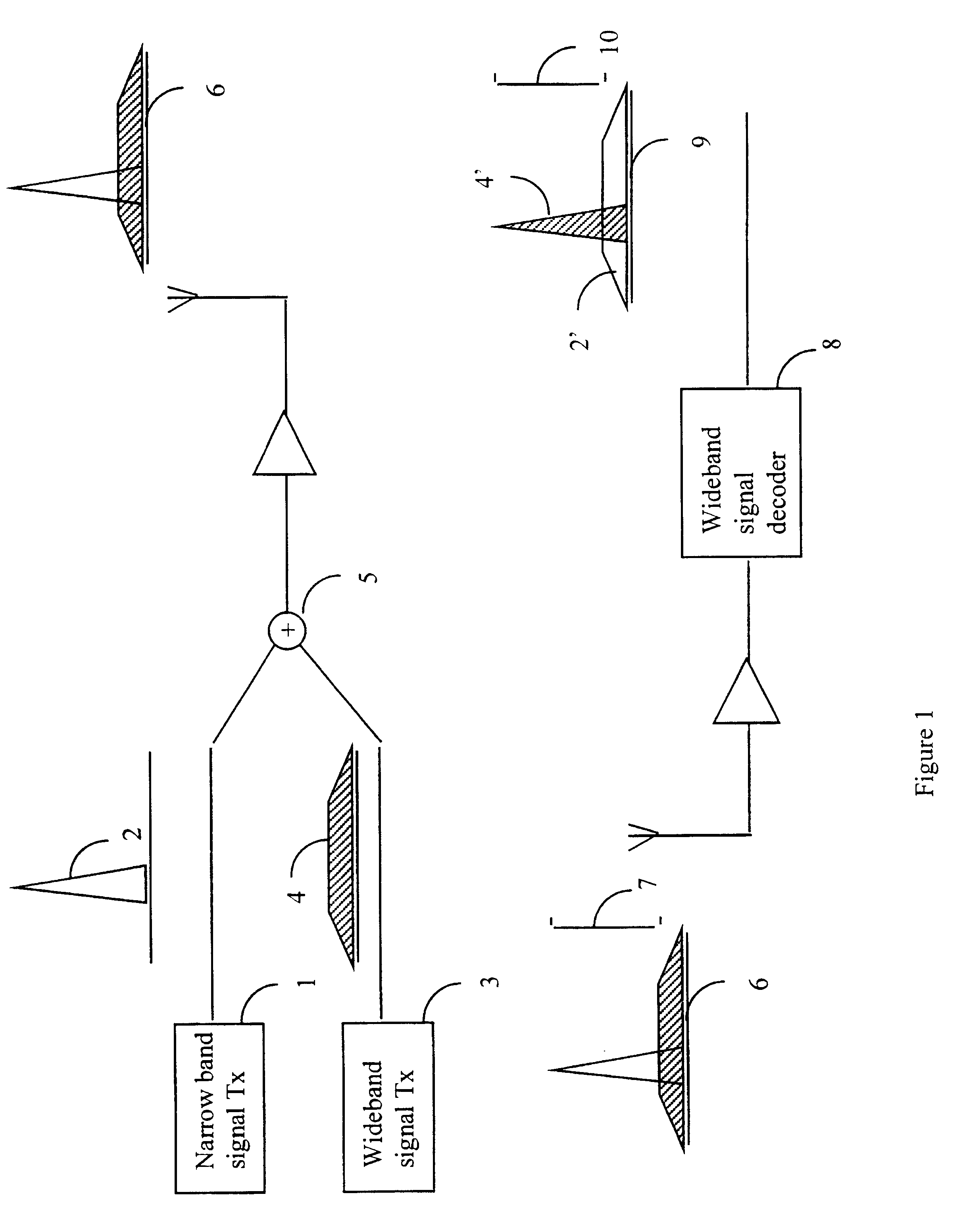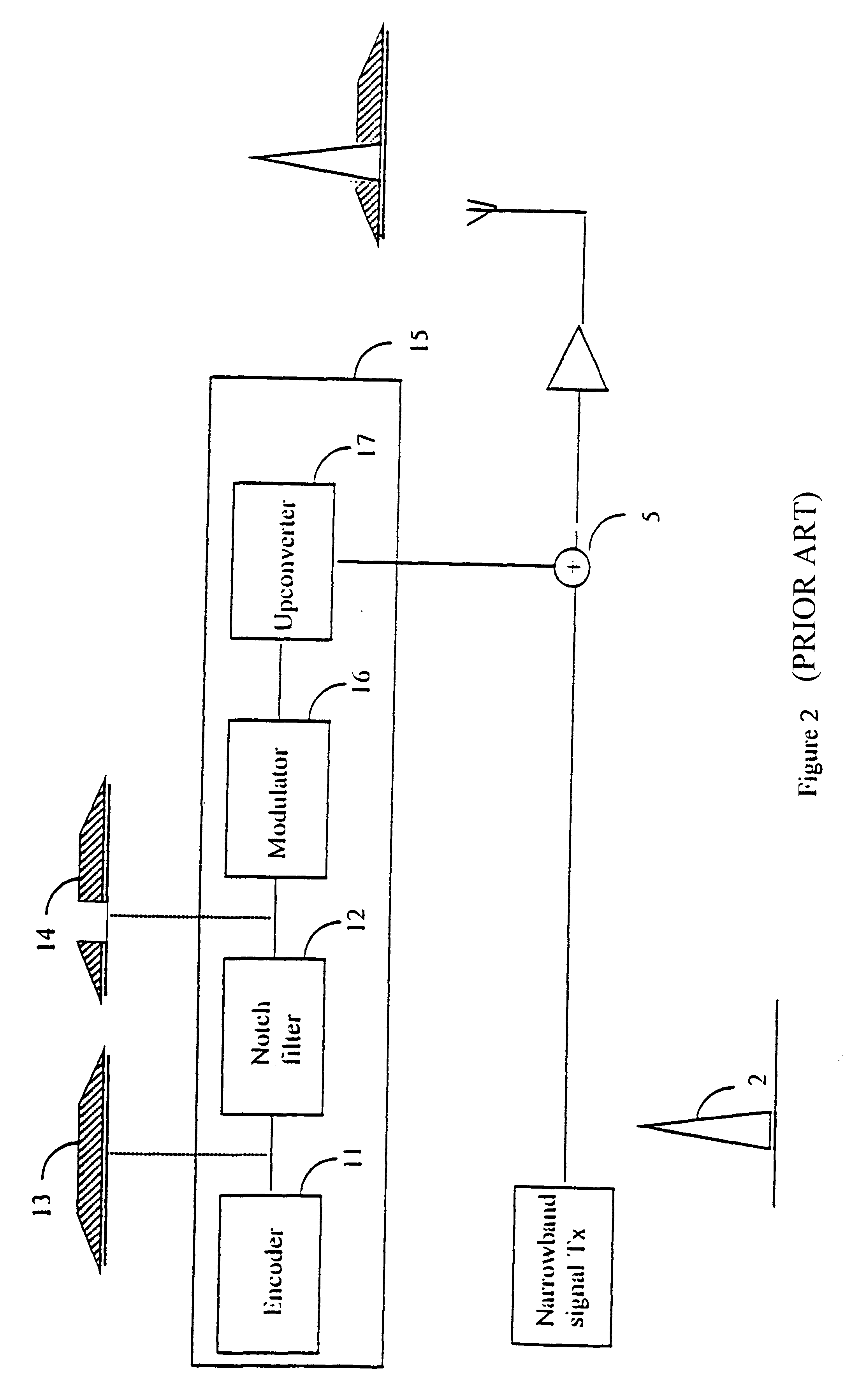Receiving spread spectrum signals with narrowband interference
a technology of spread spectrum and receiver, which is applied in the direction of transmission, electrical equipment, etc., can solve the problems of wideband signal creating interference in narrowband signal, interference in decoded spread spectrum signal, and large out-of-band capacity of systems and services which require the use of radio spectrum
- Summary
- Abstract
- Description
- Claims
- Application Information
AI Technical Summary
Benefits of technology
Problems solved by technology
Method used
Image
Examples
Embodiment Construction
FIG. 1 shows a narrowband signal transmitter 1 transmitting a narrowband signal 2 and a wideband transmitter 3 transmitting a wideband signal 4. The wideband transmitter and the narrowband transmitter are connected to an adder 5. The wideband signal and the narrowband signal are summed at the adder 5 to create a composite signal 6. Of course, different transmitters in different locations may be used, the effect as far as the present invention is concerned is identical. The composite signal is received by a wideband signal decoder 8 where the signal is decoded producing a new composite signal 9. The spectrum of the original wideband signal 4 is despread by the decoder producing a decoded signal component 4' of the new composite signal 9 and the spectrum of the original narrowband signal 2 is spread to produce a new component 2' of the new composite signal 9. The new composite signal 9 has a carrier to interference ratio 10 for the decoded wideband signal 4'.
As far as the narrowband s...
PUM
 Login to View More
Login to View More Abstract
Description
Claims
Application Information
 Login to View More
Login to View More - R&D
- Intellectual Property
- Life Sciences
- Materials
- Tech Scout
- Unparalleled Data Quality
- Higher Quality Content
- 60% Fewer Hallucinations
Browse by: Latest US Patents, China's latest patents, Technical Efficacy Thesaurus, Application Domain, Technology Topic, Popular Technical Reports.
© 2025 PatSnap. All rights reserved.Legal|Privacy policy|Modern Slavery Act Transparency Statement|Sitemap|About US| Contact US: help@patsnap.com



